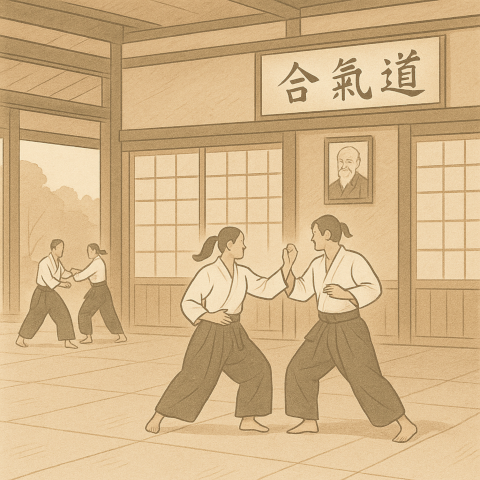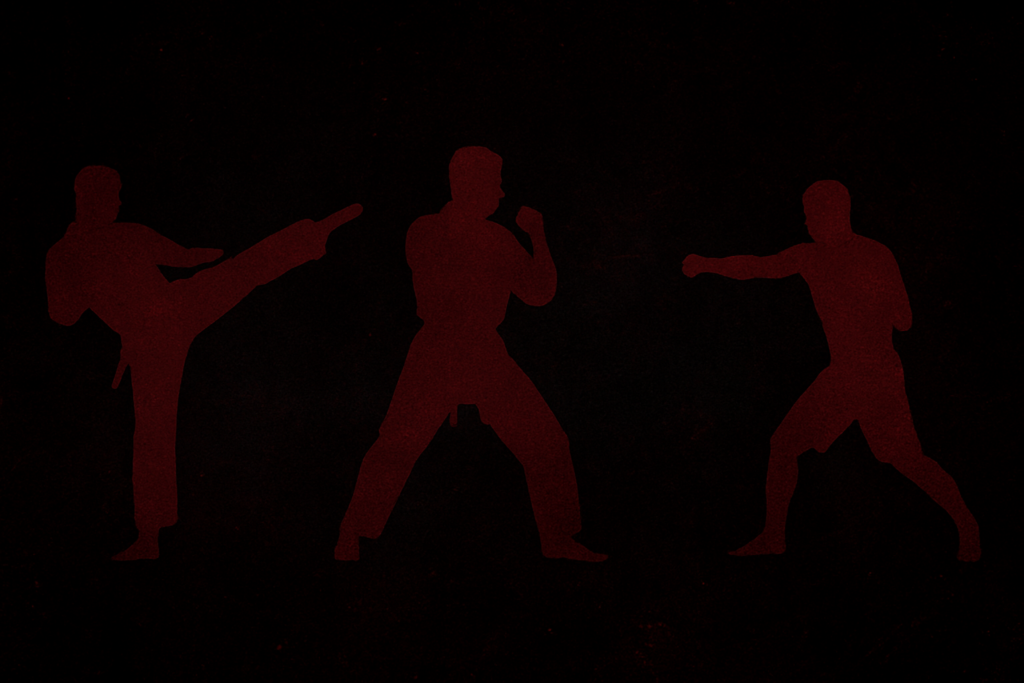The Art of Harmony and Flow
🧠 A Brief History of Aikido

Aikido (合気道) translates to “the way of harmony with energy.”
It was founded in Japan in the early 20th century by Morihei Ueshiba (1883–1969), a martial artist who had mastered multiple traditional fighting systems, including jujutsu, kenjutsu (sword), and sojutsu (spear).
Ueshiba, often called O-Sensei (“Great Teacher”), developed Aikido not as a means to defeat others but to overcome aggression with peace and control.
He combined effective self-defense principles with a deep spiritual philosophy rooted in harmony, compassion, and balance.
🏯 Main Characteristics of Aikido
- Core Principle: Redirect energy rather than oppose it.
- Training focus: Joint locks, pins, and throws derived from classical jujutsu.
- Philosophy: Neutralize aggression without harm, emphasizing cooperation and personal growth.
- Objective: Achieve harmony between body, mind, and surroundings.
Unlike striking arts such as Karate or Taekwondo, Aikido practitioners (aikidoka) learn to blend with an attack’s motion, using timing and circular movement to control or neutralize an opponent’s force.
⚔️ The Philosophy of Aikido
Aikido’s essence is not domination, but resolution.
It’s based on the belief that true strength lies in peaceful control rather than conflict.
As Ueshiba said:
“The true victory is victory over oneself.”
This mindset makes Aikido unique among martial arts — it’s a physical and spiritual discipline focused on personal transformation rather than competition.
🥋 Major Styles of Aikido
Since Ueshiba’s passing, his students developed several schools that interpret his teachings differently.
All share the same foundation of circular motion, harmony, and non-resistance — but with varied emphasis on technique, realism, or philosophy.
| Aikido Style | Founder / Head | Key Characteristics |
|---|---|---|
| Aikikai (Mainline Aikido) | Morihei Ueshiba, continued by his son Kisshomaru Ueshiba (1921–1999) and grandson Moriteru Ueshiba | The most widespread school; soft, flowing movements; strong focus on traditional forms (kata). |
| Yoshinkan Aikido | Gozo Shioda (1915–1994) | More structured and precise; used for Japanese police training; emphasizes practical self-defense. |
| Iwama-Ryu Aikido | Morihiro Saito (1928–2002) | Retains Ueshiba’s earlier “harder” style; close integration of weapon techniques (bokken and jo). |
| Ki Aikido (Shin Shin Toitsu) | Koichi Tohei (1920–2011) | Emphasizes “Ki” (life energy), breathing, and mind-body coordination; gentle and meditative approach. |
| Tomiki (Shodokan) Aikido | Kenji Tomiki (1900–1979) | Introduces safe, competitive practice through randori (free sparring) and point-based drills. |
Each school reflects a different balance between formality, realism, and spiritual practice — giving practitioners room to find what suits their personality.
🧘 How Aikido Training Works
Aikido classes focus on cooperation rather than competition.
Students practice both the role of uke (receiver) and nage (executor), learning to fall safely and move fluidly.
Key elements of training include:
- Kihon (Basics): Stances, posture, and movement drills.
- Waza (Techniques): Joint locks (ikkyo, nikkyo, sankyo), pins, and throws.
- Weapons practice: Wooden sword (bokken), staff (jo), and knife (tanto) to enhance timing and distance.
- Ukemi: Rolling and falling safely to avoid injury.
This cooperative method builds trust, body control, and mindfulness — traits that extend far beyond the dojo.
🧍♂️ Who Can Practice Aikido?
Aikido is uniquely adaptable to all ages and fitness levels.
| Group | Benefits |
|---|---|
| Children | Improves focus, patience, and coordination through controlled movement. |
| Adults | Builds flexibility, balance, and stress relief without impact strain. |
| Seniors | Encourages gentle exercise, joint mobility, and mental calmness. |
Because Aikido doesn’t rely on strength or speed, it’s accessible to everyone — especially those seeking longevity and functional movement over brute competition.
💪 Benefits of Practicing Aikido
Physical Benefits:
- Improves balance, coordination, and posture
- Builds flexibility and functional strength
- Teaches safe falling techniques (valuable in daily life)
Mental Benefits:
- Cultivates calmness under pressure
- Reduces stress and improves emotional control
- Encourages mindfulness and awareness
Spiritual & Social Benefits:
- Promotes empathy, patience, and humility
- Builds community through cooperative learning
- Aligns with principles of peace and harmony
🌸 Why You Should Try Aikido
Aikido is perfect for those seeking growth without aggression, strength without tension, and discipline without competition.
It’s a lifelong path toward physical and mental harmony — a martial art where success isn’t measured in victory, but in self-mastery.
🌀 Aikido teaches you to move with life, not against it.

